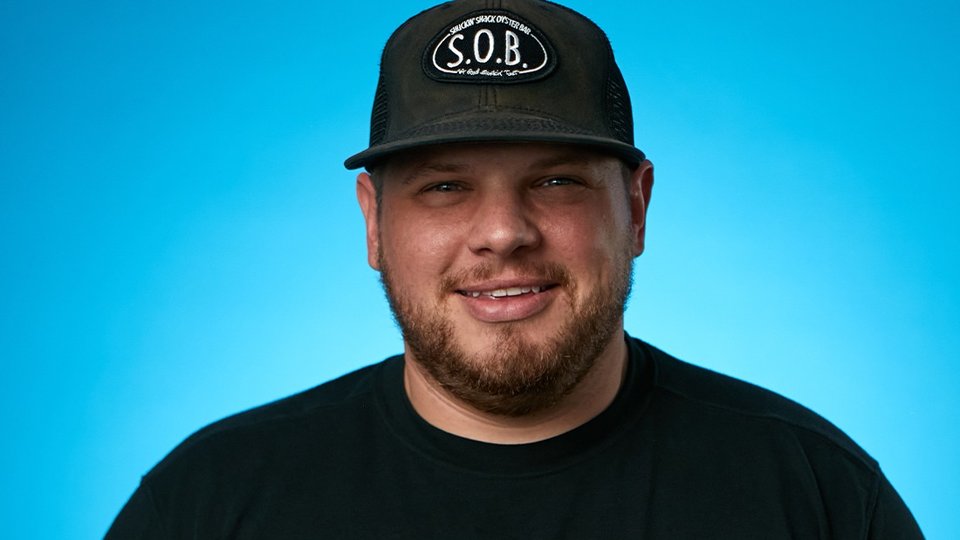Operations
CEO of full-service brand shares lessons with fast casual operators
Jonathan Weathington, CEO of Shuckin' Shack, discusses how he doubled down on his unconventional marketing efforts invested in curbside pick-up and amped up social media to stay in the fight. Delivery was never more than 5% of his sales and turnover dropped 28%, making teh brand a true outlier.

March 15, 2022
By Jonathan Weathington, CEO of Shuckin' Shack
If 2020 was a street brawl, then 2021 was a heavyweight prizefight.
Thanks to COVID-19, March 2020 represented a sucker punch out of nowhere. Operating a full-service restaurant brand in the spring and summer of 2020 felt like a street fight with one arm tied behind your back. As we progressed through the remainder of 2020 and into early 2021, and operational muscle memory returned, we began to better adjust to and defend against the uppercuts in the form of capacity restrictions, municipal mandates, and labor shortages. This was our training for the rest of 2021 — the heavyweight prizefight against a formidable opponent of long-term labor shortages, supply-chain challenges and a new strain of Coronavirus.
At Shuckin' Shack, since the early days of inception, we've depended upon a low-labor model and an ultra-efficient cook line to maximize the bottom line. We crosstrain back-of-house employees in all positions, allowing for an efficient labor model that utilizes an employee's cross preparation to best complete tasks. Over a 24-month period, beginning Jan. 1, 2018, our system-wide average hourly crew labor stood at 12.2%, while over a 24-month period, beginning March 1, 2020, that number surged to 14.7%, representing a 20% increase in hourly crew labor spend. While some of this surge can be attributed to early Paycheck Protection Program requirements, we also saw significant wage increases over the surveyed period.
Aside from labor, supply chain woes continued in 2021, exacerbated by the labor shortage, leading to (for the first time in my career) both a "wait and see" approach (as it relates to price forecasting and a host of black swan events) and an "ultra-proactive" approach (key timely decision making for major group purchasing). We saw a cost of goods increase of over 10% in a short amount of time, driven by high-cost proteins like crab legs, various fishes, and chicken wings, along with a steady rise in other food items and disposables.
Despite the 1-2 punch of labor and supply chain, 2021 served as a record-breaking year for Shuckin' Shack: over $20 million in system-wide sales (with 95%+ being on-premise sales), a same-store sales comp of +11% (versus 2019), our biggest franchise development year ever, and renewed faith and dependence upon guiding principles of our brand.
Piggy-backing on my previous metaphor, our counter-punch to 2021 relied on two things: pointed communication and brand identity.
Dating back to March 2020 and continuing today, pointed communication to our customers has been a primary reason we've been able to not only stay afloat but thrive during uncertain times. As opposed to spending capital on technology and competing with a host of other brands now ubiquitous with online ordering and delivery, we chose to invest in an interactive social media approach, driven by a singular message: "We are your choice for seafood and cocktails."
We relied on our higher-quality products and bet that our customers would want to escape from their home, and would choose curbside to-go if they consistently heard our message. Delivery never represented more than 5% of our total sales during the height of the pandemic (when dine-in restrictions eased to 50% or more) — a true outlier in the full-service sector.
In addition to our customers, pointed communication also extended to our staff members. Yes, we increased wages to be more competitive across the board, but we also took a holistic approach to talking with our employees. Simple conversations improved our employee retention. We focused on employee well-being, offered more flexible work schedules and tried to listen more to the actual needs of our front-line workers — whether inside or outside of the restaurant's four walls. In our company units, from 2019 to 2021, we reduced our overall employee turnover by 28%.
Our knockout punch to 2021 was a familiar tool in our arsenal: brand identity. Our marketing team doubled down on our "unconventional" marketing efforts, driven by our soiree into viral trends (with a Shuckin' Shack twist). We stuck with who we knew ourselves to be, and more importantly who our customers knew us to be: authentic and fun. Our operations team continued to work on combating supply chain challenges, all the while encouraging our franchisees to roll with the punches and depend on our market pricing structure on key menu items.
Behind the scenes, our conversations focused on how we could best deliver our customer experience to those still at home. We offered Take & Boil kits, "Just Add Booze" cocktail pre-mixes, and made sure that the customer experience for our dine-in guests was safe and exceptional.
Through the remainder of 2021, we capitalized on the simple fact that a vast majority of seafood consumed in the United States is done in restaurants and that within our footprint, we would be that restaurant of choice. For us, the choice to rely on what we knew wasn't an easy one. There were certain moments throughout the prize fight of 2021 where we got knocked down, but we got back up, leaned into what we do best, and continued to throw punches.







